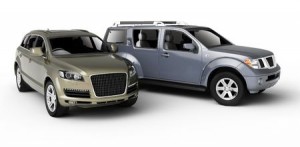 There are a multitude of factors that affect car insurance rates, which is why premiums can vary so significantly from driver to driver. Things like age, gender, driving history, vehicle usage and so on play a large role in how insurance providers rate drivers and determine how much coverage will cost. A lesser known factor that affects premiums is the vehicle itself. There can be quite a large discrepancy in insurance rates by car. For example, you wouldn’t expect cheap insurance if you’re driving a brand new Lamborghini Murcielago; but a lightly used Toyota Corolla, on the other hand, would come with a more modest premium.
There are a multitude of factors that affect car insurance rates, which is why premiums can vary so significantly from driver to driver. Things like age, gender, driving history, vehicle usage and so on play a large role in how insurance providers rate drivers and determine how much coverage will cost. A lesser known factor that affects premiums is the vehicle itself. There can be quite a large discrepancy in insurance rates by car. For example, you wouldn’t expect cheap insurance if you’re driving a brand new Lamborghini Murcielago; but a lightly used Toyota Corolla, on the other hand, would come with a more modest premium.
In this blog post, we’re going to look at some of the main characteristics that account for the differences in insurance rates by car.
Value
Newer, more expensive cars are typically more expensive to insure. The logic behind this is simple: a newer, expensive car would be more costly for the insurance company to repair or replace in the event of an accident or other damage. Older vehicles have depreciated in value, while less expensive vehicles don’t have the same value to begin with, and thus repairs and replacements would cost the insurance provider less.
That said, if a vehicle of lower value has a significantly higher statistical chance of a collision payout, it could be the same (or even more expensive) to insure. For example, a Ford Mustang GT will have a similar or higher collision coverage premium than a BMW Z4 due to greater collision risk, despite the fact that the latter is worth three times the value and is more costly to repair and maintain.
Or, call one of our live agents at 780-809-8486 or toll-free at 1-888-633-9898
Make, Model, and Trim of Car
The make, model and trim of the car, while used by insurance companies to determine value, are also used to make risk assessments based on statistical patterns. Particular types of vehicles may have a higher frequency of accidents than others, and even similar models with different trims may feature different levels of equipment, body styles or drivetrains.
Security
The security of a vehicle also affects the price of car insurance. Better security means that theft and other damages are less likely to occur, which decreases the risk for insurance providers. Features such as additional alarms and vehicle immobilization systems, for example, may decrease the price of insuring the vehicle.
While there are a variety of contributing factors used to determine car insurance prices, characteristics of the vehicle itself play a significant role, which explains differences in insurance rates by car. Regardless of the vehicle you drive, it’s important that you find the coverage that best suits your needs. At ARC Insurance, we can help you in your search. Call us today to speak with one of our live agents! 1-888-633-9898.
